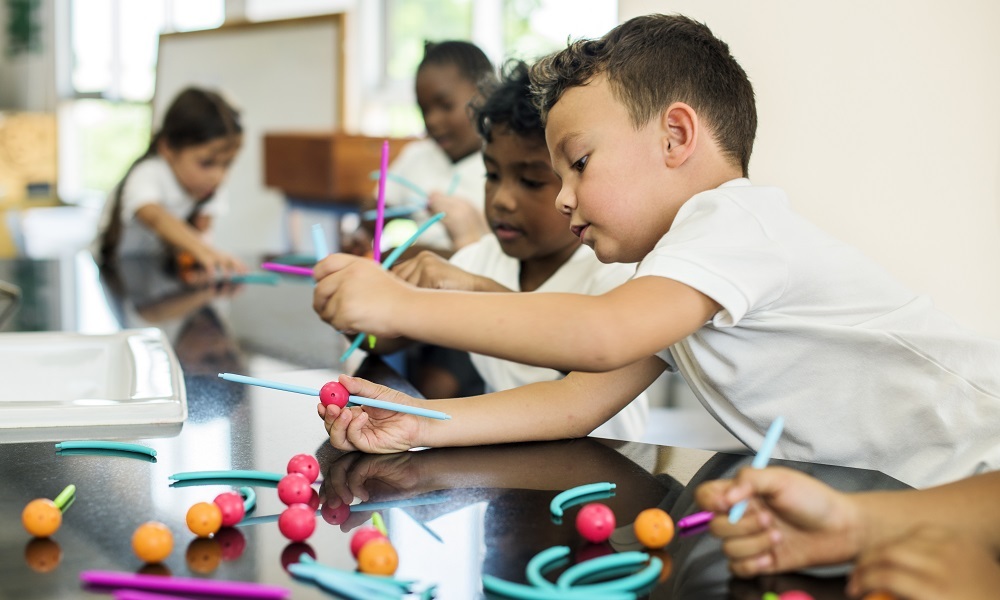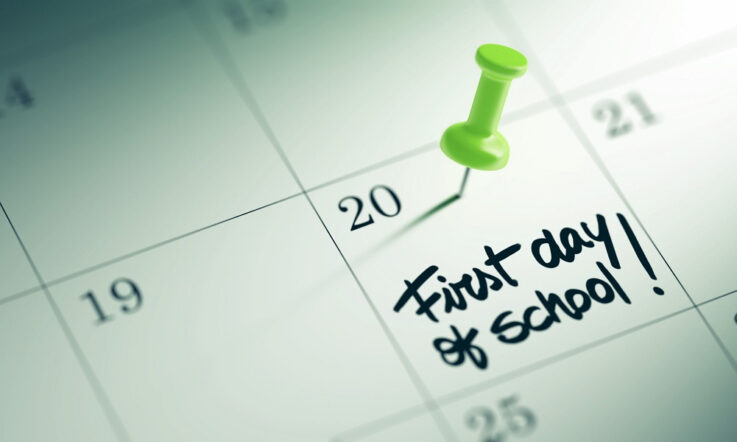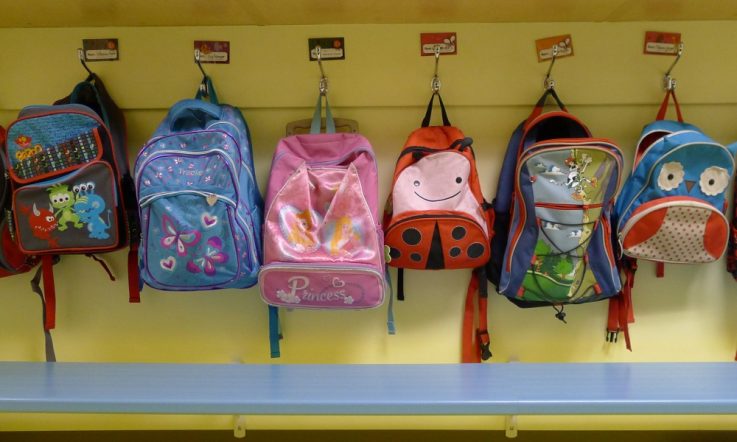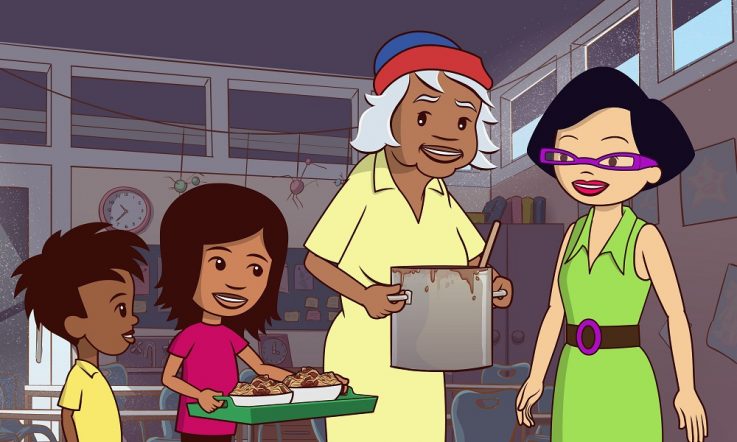Late last year, Teacher ran an article about Kerrimuir Primary School’s plans to introduce a Ready to Learn program, aimed at ensuring incoming Foundation students were well-equipped with essential skills needed to access the curriculum. Here, Assistant Principal Jo Jolly updates readers on what’s been happening with the intervention and its impact on student learning.
As the events of 2020 unfolded, staff felt that more than ever, our incoming Foundation students for 2021 would benefit from additional support to develop gross motor, fine motor, social and emotional and classroom-based skills. We devised a program to support the work done by our local kindergartens.
Kerrimuir Primary School is a steadily growing school in Melbourne’s inner east. We are surrounded by a variety of early childhood and kindergarten settings, and our school community is made up of families from a wide variety of backgrounds. As our reputation of an inclusive, synthetic phonics based school grows, so does our community. To this end, at the beginning of 2021 we knew that many students coming to our school in a post pandemic environment were all going to have a wide spectrum of early childhood and kindergarten experiences.
The idea for us was: the better equipped students were with all of these big four skill sets, the quicker they would be able to access the curriculum. In short, they would almost immediately be ‘ready to learn’.
We implemented the program as planned over the first four Wednesdays of Term 1. Traditionally, this time would be taken up with student interviews to complete the English Online interview and a basic maths assessment to gauge student readiness for learning. As a school we had decided to do these testing days all in a row at the start of the year. The English Online interview is a department mandate; by moving these to the first four days we felt we were getting consistent base level data.
The reasoning was twofold: firstly so as to not skew our data results on the phonics testing (giving us a much better ability picture), and secondly, so as to use the first four Wednesdays as our intensive Ready to Learn program days. With the help from our outside partner, Zanda Speech and Occupational Therapy, we began the term hopeful and excited about the potential of our program.
What happened in the intervention?
Every Wednesday the classrooms and outdoors areas required to implement the program were set up for the instruction and practice of one specific skill: fine motor skills, gross motor skills, social and emotional skills, and classroom skills.
For our fine motor development one of our Foundation rooms was set up each week with a variety of different tasks: tap-tap boards, threading, paper ripping, scrunching, tearing, scissor skills or tweezers and pegs set up to build fine motor stamina and strength.
In the social and emotional skills room, Zanda would set up their program as required each week, using balls and other props, videos, charts and visuals to help students understand social exchanges and how best to understand and regulate their feelings.
In the classroom skills room a teacher would lead the groups in a variety of skills such as pushing in chairs, how to pack up work, walking in line or around the room safely, and how to ensure social exchanges in the classroom were appropriate.
Finally, outside in the gross motor area, a teacher and helpers lead groups in essential skills such as how to safely use play equipment, how to throw and catch balls, how to hop, skip and jump and following directions for games. Each class rotated through all the hour-long activities once, covering off four hours of intensive explicit instruction and practice.
Measuring its effectiveness
To measure the effectiveness of our program we gathered a variety of qualitative and quantitative data sources that took the form of observations, checklists and surveys of teacher perception. Our fine motor and gross motor programs were easy to quantify: we had checklists of achievement, and our observers could tick boxes to chart our sample students’ individual progress.
After reviewing the data, we felt the fine and gross motor intensive programs had delivered excellent student gains. On average across our four prep classes, we observed a 33.75 per cent increase in fine motor skills and a 73.5 per cent increase in gross motor skills. So, our prep teachers continued with the intensive style of fine and gross motor program after the initial period had elapsed on the basis of the progress that had been made in the previous four weeks.
Our social, emotional and classroom skills data was more qualitative in nature, and required a lot of analysis of phrases and opinions by staff. The kinds of quantifiers that were deemed to be positive indications of student progress were observations where it was noted that a student could do things like:
- Enter a group effectively and politely;
- Move around a classroom correctly (push in their chair, tidy their table);
- Take turns and use manners when doing so;
- Have accountable talk exchanges;
- Sit and use ‘study skills’ (sitting/listening stamina);
- Explain their feelings to others after a negative outcome or exchange;
- Use positive talk to engage with others;
- Correctly understand the day-to-day routine matters of a classroom and engage with them appropriately (following timetables, walking in lines, lining up at doors etc.).
It could be argued that many of our staff had an ‘investment bias’ in this qualitative data collection, but with the addition of unbiased observer’s opinions to the survey data, we feel that this part of program has indicated success.
It is also potentially worthwhile noting that these skills would have naturally developed over the course of our term. What we wanted at our school was to have students ready to learn as quickly as possible. In this regard, the social and emotional factors were skills we wanted in place for students over the shortest period of time possible, with the idea that this would offset any ‘COVID-19 lag’. According to our data and analysis, we managed to achieve this aim.
Moving into 2022
At Kerrimuir Primary School we see the benefit of our Ready to Learn program. Ensuring students have all the essential skills to be able to access the curriculum is something we are committed to in 2022. While we originally put this program in place to offset the ‘COVID-19 lag’, we see the importance of it as an ongoing commitment to building upon early learning done in pre-school programs.
We feel that once a student is comfortable with their surrounds, understands school processes, can engage with others productively and has core fine and gross motor skills, this is truly a student who is ready to learn.
As an early years’ teacher, reflect on how you support incoming students to be ready to learn in their first year of primary school. How has COVID-19 impacted the support you offer?
Consider the skills prep classes were focusing on in this intervention: fine motor skills, gross motor skills, social and emotional skills, and classroom skills. As a prep teacher, when was the last time you reviewed the work you’re doing with students in their first few weeks of school on these skills? Is there room for improvement?



